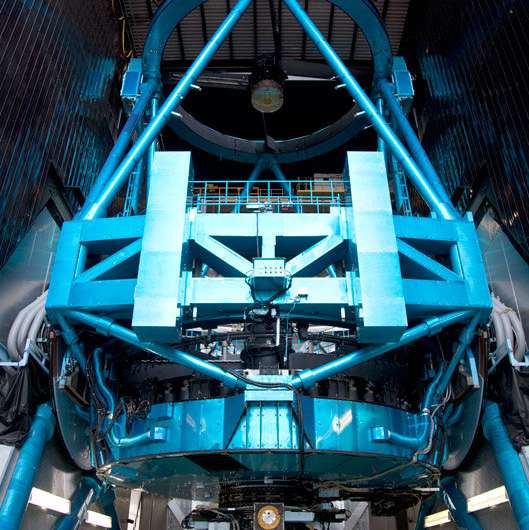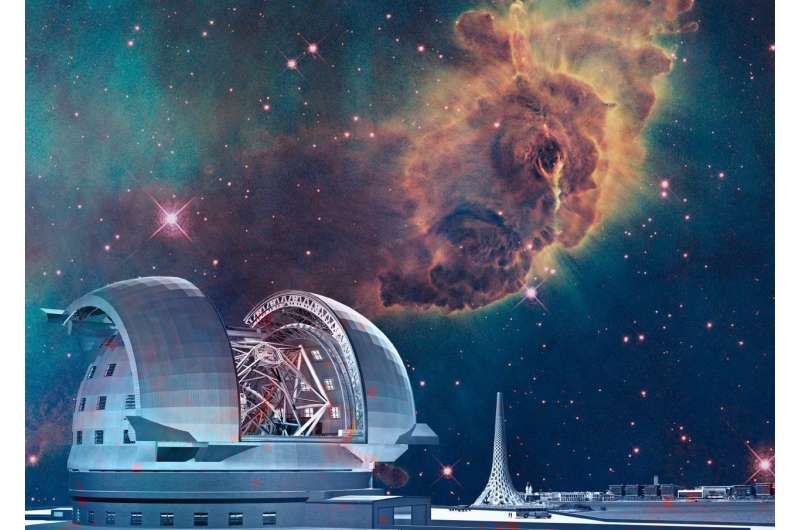Award-winning algorithm takes search for habitable planets to the next level

An international team of scientists, including KAUST high performance computing experts and astronomers from the Paris Observatory and the National Astronomical Observatory of Japan (NAOJ), in collaboration with NVIDIA, is taking the search for habitable planets and observation of first epoch galaxies to the next level.
An on-sky demonstration was recently achieved on NAOJ's 8.2 meter Subaru Telescope, and the Paris Observatory's team is already scaling up the algorithms for future larger telescopes. The KAUST Extreme Computing Research Center (ECRC) is working with the astronomers to develop the advanced Extreme-AO algorithms that will meet the formidable habitable exoplanet imaging challenge.
"Imaging exoplanets with large ground-based telescopes is very challenging due to the star/planet contrast and blurring induced by Earth's atmosphere. Very high-performance adaptive optics—sometimes referred to as 'Extreme-AO'—are required," stated Dr. Hatem Ltaief, a senior research scientist in the ECRC.
A radically new approach to AO has emerged from the collaboration: faster, bigger and much smarter control algorithms. Powered by the University's linear algebra code running on NVIDIA graphics processing units (GPUs), the new computational system continuously optimizes itself and even learns to anticipate fast-changing optical disturbances induced by the Earth's atmosphere.

"This fantastic new technology is already being used to take a closer look at exoplanets orbiting around nearby stars. With the larger 25-40 meter telescopes astronomers are currently building, new Earth-like planets orbiting nearby stars will be imaged and their atmospheric composition will be measured to look for signs of life such as oxygen, water or methane," said Professor Damien Gratadour, an astronomer at the Paris Observatory.
ECRC researchers recently implemented a new Singular Value Decomposition (SVD) algorithm, often referred as the workhorse for numerical linear algebra, to optimally control a small high-speed deformable mirror to compensate for atmospheric turbulence. This research resulted in one of the best paper awards at the Platform for Advanced Scientific Computing (PASC) Conference 2018 in Basel, Switzerland. The innovation is already successfully used by astronomers to image exoplanets with the Subaru Telescope located at 14,000 feet in Hawaii.
"This challenge is further exacerbated with large telescopes, where imaging habitable planets through Earth's atmosphere is notoriously difficult, and requires a new approach to adaptive optics. Our previous AO systems were quite slow and lagging behind the fast-changing optical aberration due to atmospheric turbulence," noted Professor Olivier Guyon, an astronomer at the Subaru Telescope.

"The SVD algorithm developed by KAUST scientists is enabling us to correct in real-time for atmospheric blurring of images taken by large telescopes using smarter Extreme-AO. The algorithm now learns to optimize itself and we are no longer outsmarted by turbulence," he continued.
Working closely with NVIDIA has been critical to the success of the project.
"This is an unprecedented HPC challenge," said Steve Oberlin, chief technology officer for accelerated computing at NVIDIA. "Optical aberrations induced by atmosphere change over millisecond timescale. On current large telescopes, algorithms must compute thousands of deformable actuator positions in a millisecond or less to sharpen images. The Subaru Telescope is the highest recorded terrestrial use of these kind of GPU systems. We are continuing to work with the team as the hardware is scaled up for this exciting project due to the critical performance impact of NVIDIA GPUs."
The work of the project team adds to the historic contribution of the Middle East into the field of astronomy.
"We are helping astronomers make better use of today and tomorrow's most advanced telescopes. Interestingly, many of the stars we are observing with the Subaru Telescope were first sighted by stargazers in the region and have retained their Arabic names. We hope to contribute to the tradition of astronomy in the region," Ltaief said.



















